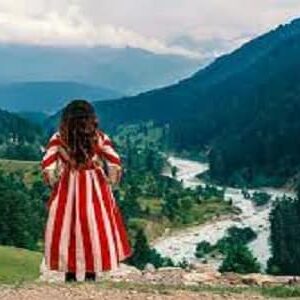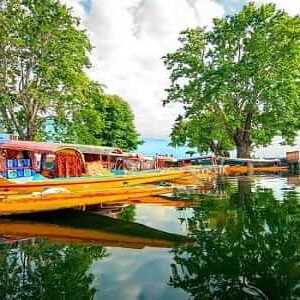The Zoji La pass, also known as the Zoji Pass, is a high mountain pass in the western part of the Himalayan mountain range. It is located in the Indian union territory of Jammu and Kashmir. The pass sits at an elevation of approximately 11,575 feet (3,528 meters) above sea level.
Zoji La is an important pass as it connects the regions of Ladakh and Kashmir with the rest of India. It is a crucial transportation route, especially during the summer months when it is open and allows for the movement of goods and people between these regions and the rest of India.
The pass is known for its challenging and treacherous road conditions, particularly during the winter when it is often closed due to heavy snowfall and avalanches. The Zoji La pass is a critical lifeline for the people of Ladakh and plays a vital role in maintaining the connectivity of the region with the rest of India.
Table of Contents
ToggleZojila Pass Overview
Nestled in the breathtaking western Himalayas lies an enchanting yet challenging passage, the Zoji La pass. At an awe-inspiring elevation of approximately 11,575 feet (3,528 meters) above sea level, this passage transcends the realms of mere geography, becoming an emblematic symbol of connectivity and resilience.
Zoji La, also affectionately known as the Zoji Pass, is a geographical masterpiece situated in the Indian union territory of Jammu and Kashmir. Its significance is far more than a point on a map; it’s a lifeline that binds Ladakh and Kashmir to the heart of India. In this world of majestic mountains and daunting terrain, Zoji La stands as a testament to human engineering and determination.
Every summer, as the snow begins to thaw and the icy grip of winter recedes, Zoji La awakens from its hibernation. It transforms into a bustling thoroughfare that connects remote Ladakh and the picturesque Kashmir Valley to the rest of India. This passage is not merely a road; it’s a lifeline for the people of these regions, enabling them to access essential supplies, medical facilities, and educational opportunities.
But Zoji La is no ordinary pass; it’s a force of nature, a breathtaking journey that tests the limits of human endurance and engineering prowess. The road that traverses this pass is a marvel and a challenge rolled into one. Carved out of sheer rock faces and clinging precariously to the mountainsides, it winds its way through this unforgiving terrain. The ever-present danger of landslides and avalanches keeps travelers on their toes, making each journey a heart-pounding adventure.
Yet, it’s precisely this adrenaline-pumping experience that draws adventure seekers and intrepid travelers from around the world. Crossing Zoji La is a rite of passage, a test of mettle that leaves an indelible mark on those who dare to tread upon its winding paths.
Best Time to Visit Zojila Pass
The best time to visit Zoji La pass and the surrounding regions of Ladakh and Kashmir largely depends on your interests and the experience you seek, as the weather and road conditions can vary significantly throughout the year. Here are some considerations for different seasons:
Summer (June to September):
- Best Time for Travel: This is the most popular time to visit Zoji La and the region. The pass is typically open from late spring to early autumn, making it accessible during this period.
- Weather: Summer brings milder temperatures, clear skies, and lush green landscapes to Ladakh and Kashmir. It’s an ideal time for trekking, sightseeing, and exploring the culture of the region.
- Events and Festivals: You may have the opportunity to witness local festivals and cultural events, as this is a festive season in Ladakh and Kashmir.
Autumn (September to October):
- Best Time for Scenic Beauty: September and early October offer the advantage of pleasant weather and the added bonus of autumn foliage, with the leaves changing colors.
- Weather: Days are still warm and sunny, but nights can be chilly, so pack accordingly.
Winter (November to March):
- Best Time for Snow Enthusiasts: If you’re interested in snow sports or experiencing the winter wonderland, visiting during the winter months is an option. However, note that Zoji La pass is typically closed during this time due to heavy snowfall and avalanches.
- Weather: Ladakh and Kashmir experience extreme cold during this period, with temperatures well below freezing. It’s suitable for those seeking a unique, cold-weather adventure.
Spring (April to May):
- Best Time for Photography: Spring brings the region back to life as the snow melts and the landscape transforms with blooming flowers, making it an excellent time for photography enthusiasts.
- Weather: While the days start to warm up, nights can still be chilly, and some areas may still be inaccessible due to lingering snow.
How to Reach Zojila Pass
Reaching Zoji La pass involves traveling to the region of Ladakh and Kashmir in northern India. The pass is a crucial gateway connecting these regions to the rest of India. Here’s how you can reach Zoji La:
By Air:
- The nearest major airport to Zoji La is the Srinagar International Airport in Srinagar, Kashmir, which is well-connected to major cities in India, including Delhi and Mumbai.
- From Srinagar, you can hire a taxi or take a bus to reach Sonamarg, a town situated at the base of Zoji La pass. The journey from Srinagar to Sonamarg takes around 3-4 hours.
- Srinagar also has helicopter services to some areas in Ladakh, providing another mode of transportation.
By Road:
- The most common way to reach Zoji La is by road. You can travel by road from major cities like Delhi, Jammu, or Srinagar.
- From Delhi or Jammu, you can take a long-distance bus or hire a private taxi to reach Srinagar.
- From Srinagar, you can drive or hire a taxi to reach Sonamarg, which serves as the base for crossing Zoji La. The journey to Sonamarg offers stunning views of the Kashmir Valley.




